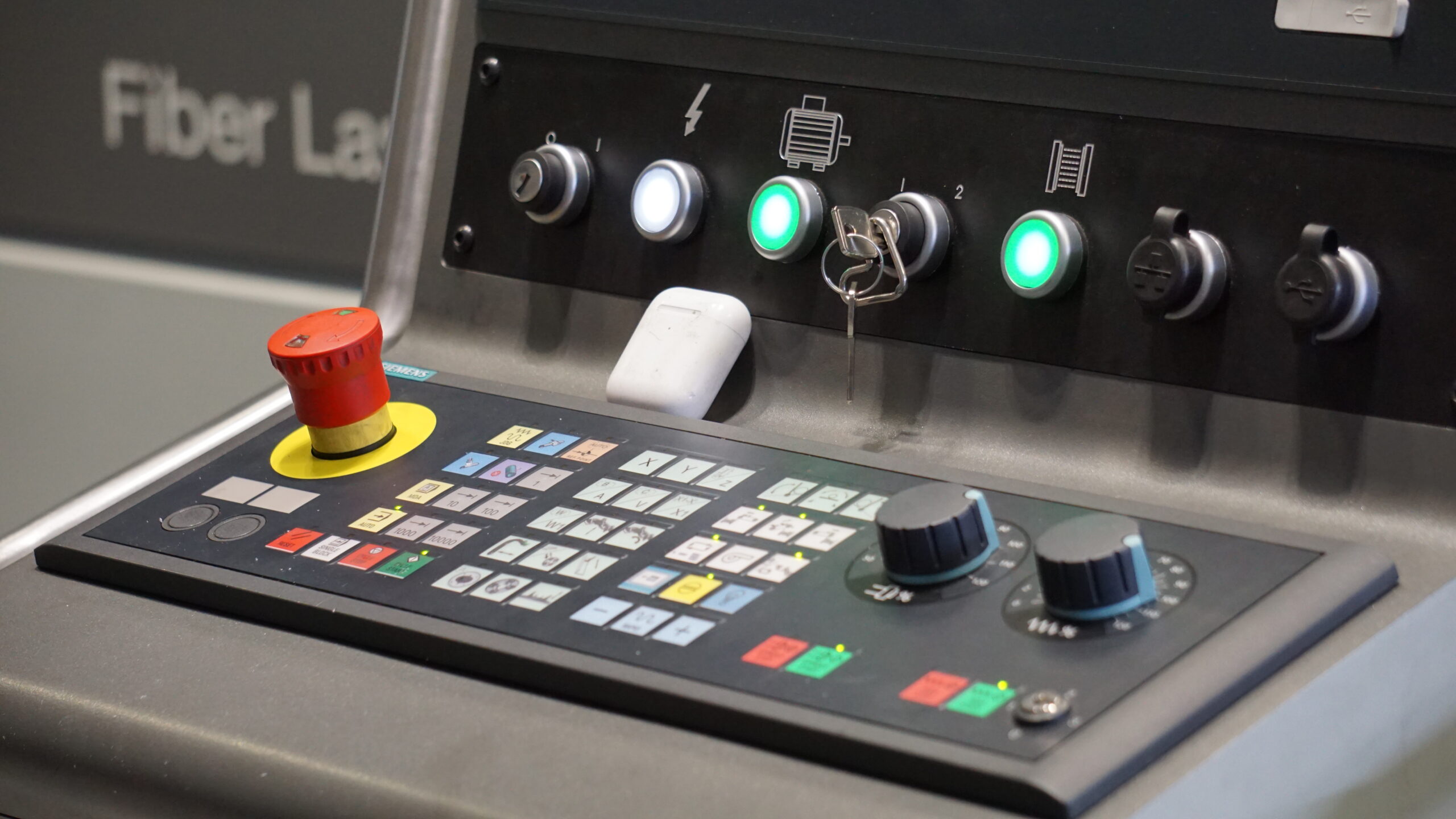
To prepare the order for a smooth production run
1) On creating the 3D model:
1.1) Avoid modelling hole chamfers.
1.2) Avoid modelling the weld seam. Instead mark the required face with the color red (RGB 255,0,0). This is then detected by the program automatically. (Make sure face colors remain after exporting the model)
1.3) Model theaded holes in the correct, smaller size.
1.4) If there’s a slot running the lenght of the tube to the end, then leave 0.1mm of material (a bridge) at the end.
1.5) Engravings must be 3D (must have depth). All cuts that don’t go through the tube wall, are automatically translated into engravings.
1.6) Keep in mind that cuts are corrected (Picture>) to be technically feasible for the laser. For example, the tilting limit of the cutting head is 45 degrees.
1.7) When a cut ends with the tube wall, keep 0.1mm material intact. (Picture>)
1.8) Bendcut details should be modelled as one piece (one solid body), so that the beginning and end of the tube are detectable. (Picture>)
1.9) Tubes must have the correct wall thickness and correct corner radiuses. On a corner the inner and outer radius must be cocentric. (Picture>)
Tube corner radius formulas
Stainless steel or cold rolled tube:
corner outer radius on tube with <3mm wall thickness = wall thickness X 1.5
corner outer radius on tube with ≥3mm wall thickness = wall thickness X 2
Hot rolled tube:
corner outer radius = wall thickness X2
All tubes:
corner inner radius = corner outer radius – wall thickness
2) On exporting the 3D detail:
2.1) File format .STP/.STEP or .IGS/.IGES.
2.2) Every detail into a separate file.
2.3) On the case of a smaller assembly, retain the common origin. (So that on import every part is in it’s place, instead of being bunched together).
2.4) On the case of a larger project (ie. apartment building railings) export such that a detail is never more than 50 meters from the origin point.
3) On naming the files:
3.1) An unique code in every filename. 22 characters is the limit!
3.2) Quantities are sometimes manually typed, so the more human readable and easily distinguishable the filenames, the lower the chance of errors.
3.3) Avoid using strange characters in the filenames (õ ä ö ü š ž ‘ = & # !).
3.4) Updated/ revised details should always be marked as such (ie. rev1). Because in case of repeat order with the same previous filenames, we use the preexisting cutting programs.
4) On sending the order:
4.1) Add the order number and project name in the Subject of the email.
4.2) Add the necessary files as attachements. Avoid using links and archives if possible. Remove any unneed files that are irrelevant to the tube cutting.
4.3) Add an .xls or .csv table with quantities. (The .STEP file name in the first column, quanity in the second, material in the third column)
4.4) Along with the .STEP file, add a (.DWG/.PDF) drawing with the same name. The drawing should show dimensions, location of the weld seam, which scap pieces to affix or retain etc. The drawing is also used in the quality control process.
4.5) In case the completed order needs to be packaged in a specific way, describe it in the email.
4.6) And finally be certain that all the info has been correctly presented. The more accurate, clear and correct the order placed – the less time calls and emails and corrections take. The more straightforward the production is, the better our prices.
5) In case of quick repeat order:
5.1) Refer also to the previous (or similar) order.
5.2) Fill and send this table>. (Picture guide here>)
6) In case there are no 3D files:
6.1) Account for the fact that translating .DWG, .PDF or hand drawings is more time consuming.
6.2) Account for the fact that translating .DWG, .PDF or hand drawings is more prone to errors. Errors that would not happen in the case of 3D models.
6.3) Double check the drawings, make sure the dimensions match the actual lenghts of the lines and sizes of the shapes.
(Example1: If the dimension shows 45°, but the actual distance measured is 44.512°, the drawing is incorrect.)
(Example2: If the dimension shows Ø30.4, but the circles as measured are Ø30, the drawing is incorrect.)
In case of a simple tube detail we look up the dimensions and manually type them into the program.
In case of complex cuts, we used the lines straight off the .DWG, to create the 3D model.
6.4) On the drawing, leave only the info required for tube cutting.
7) On sending tube materials:
7.1) We presume the incoming material is clean, straight, well packaged, sorted and labeled. With this presumption the price offers have been calculated.
7.2) Keep in mind that in case of oily, rusty or bowed tubes our processing time is longer and the final quality can not be guaranteed.
7.3) The material should be clearly marked with the company info and the tube cutting order number.
7.4) Keep in mind that a whole bundle of tubes is loaded into the laser at a time, meaning:
- 7.4.1) Different cross sections of tubes must be in separate bundles (or easily separable). In order to to avoid additional handling and sorting time.
- 7.4.2) Bundles must be correctly stacked and tighlty held together. For irregular bunches of loose tubes have to be restacked by hand.
- 7.4.3) The tube ends should be at the same distance in the whole bunch. (offset ±20mm). This promotes the smooth loading of the material.
8) On recieving the finished parts:
8.1) Relay the order numbers and pictures of the pallets to the transport company.
8.2) Before the parts are shipped out, the client may check their quality in our warehouse. Possible later requests the client may place as a new order.
